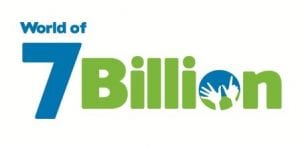 Incorporating Common Core standards for English Language Arts can be a challenge. The standards emphasize reading information and technical texts to build knowledge, argumentative writing and speaking, and using evidence to support well-defined claims. Why not use a video project to meet the CCSS? The World of 7 Billion video contest can act as a sustained research project that will meet specific Common Core standards for English Language Arts while also serving as a fun and engaging experience for your students.
Incorporating Common Core standards for English Language Arts can be a challenge. The standards emphasize reading information and technical texts to build knowledge, argumentative writing and speaking, and using evidence to support well-defined claims. Why not use a video project to meet the CCSS? The World of 7 Billion video contest can act as a sustained research project that will meet specific Common Core standards for English Language Arts while also serving as a fun and engaging experience for your students.
The video contest requires your students to connect human population growth to one of three global challenges and offer a sustainable solution. Through the research, story boarding, and filming process your students will extend their thinking and apply it to the world around them. The contest also acts as a project to drive action by inspiring and empowering students to take action towards a real-world issue.
Common Core Anchor Standards Covered
By participating in the World of 7 Billion video contest, you (and your students!) will cover the following CCSS Anchor Standards:
- Research to Build and Present Knowledge – Students will begin the video project by conducting research to solve a problem. They will need to rely on multiple sources and decipher what information is most appropriate to include and most relevant for their argument. With only 60 seconds for their message, an editorial eye will be important.
- Text Types and Purposes – Global challenges like population growth are multifaceted and thus students will be conveying complex ideas. During the story boarding process, students will write out their video’s script and this text must be well-planned, organized, and include accurate information clearly.
- Comprehension and Collaboration – In the past, many teachers have chosen to have their students work in small groups to create their videos. In this collaborative setting, students will voice their opinions and consider diverse perspectives offered by classmates. Positive group dynamics will be important to create a video that unmistakably covers the topics and offers a sustainable solution.
- Production and Distribution of Writing – Students will use technology to produce their videos, which must be submitted in an electronic, sharable format. Movie making software is fairly easy to come by and intuitive to use. It also allows students to display information dynamically and creatively.
- Presentation of Knowledge and Ideas – A winning video will present information on the connection between population growth and the chosen topic, show evidence of why it is an important, and offer ideas for working towards a solution. Student filmmakers will need to have the presented ideas flow seamlessly and use appropriate tone and style for their intended audience. They will use digital media (the audio and visual make-up of their film) to convey their message to a larger audience.
Image credits: Girl smiling in front of camera (ID 1160223302 by SDI Productions)



